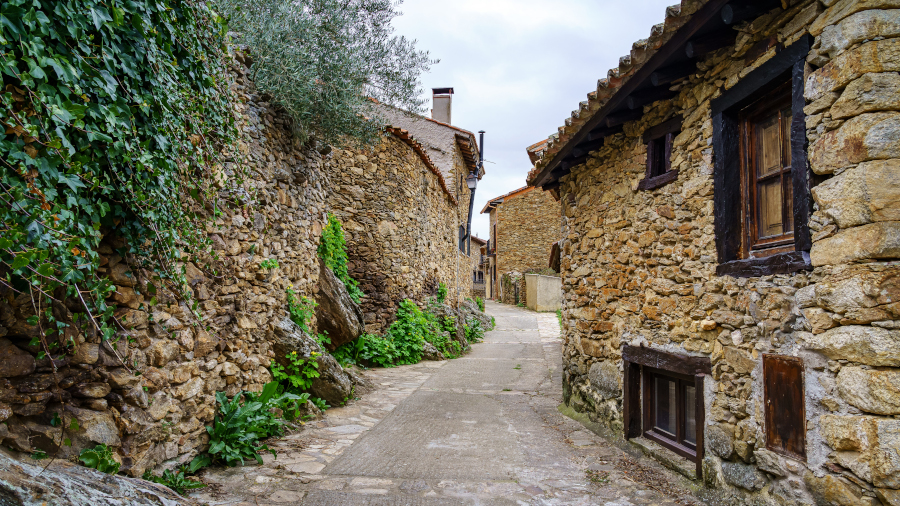Smart routes designed for all rural zones to have access to health assistance
Researchers from the UAB, the UOC and the UPV used routing algorithms to increase the efficiency of healthcare professionals when travelling to regions located more than 45 minutes on foot or by bike from a primary healthcare centre.

In rural areas, the 15-minute-walking city becomes the 45-minutes region. In other words, areas in which a 45-minute walk or bike ride is all that is needed for inhabitants to have access to what they need for a good quality of life. A total of 85% of Spain is considered to be rural, with an average population density of 17.7 inhabitants per square kilometre. In this extensive and unpopulated Spain, "it is estimated that 9% of municipalities do not comply with the 45-minutes rule", points out Cristian Castillo Gutiérrez, lecturer in Economics and Business Studies at the Open University of Catalonia (UOC) and researcher of the Sustainability, Management and Transport (SUMAT) research group.
With the aim of bringing rural populations closer to basic services such as primary healthcare assistance, Castillo led a study—with researchers from the UOC, the Universitat Autònoma de Barcelona (UAB) and the Universitat Politècnica de València (UPV)—which uses algorithms to create efficient travel routes for medical assistance vehicles. "This way, the population of these areas, with a majority of older people with little access to public transport, does not have to travel to a medical centre", the UOC lecturer explains. The study specifically focused on routing algorithms, which are in charge of designing more efficient routes according to parameters such as priorities, visit times, and travel distance. The algorithms created are scalable and can be personalised.
Working on the development of the algorithms and subsequent computational tests were researchers Ángel A. Juan, professor and researcher at the Research Centre in Production Management and Engineering (CIGIP) at the UPV’s Alcoi Campus, and Javier Panadero, lecturer in the Department of Computer Architecture and Operating Systems at the UAB. Both of them coordinate the inter-university research group ICSO, as well as the research network in transport and artificial intelligence.
According to Ángel A. Juan, "smart algorithms developed by our research group are prepared to solve complex optimisation problems, such as finding the best routes for vehicles or, as in this project, contributing to tracing routes so that all rural zones can have access to health assistance". “The work has been very gratifying, since it offers artificial intelligence tools to improve access to health assistance”, Javier Panadero adds, and goes on to say “and it has allowed expanding and strengthening a close collaboration among the three participating universities, paving the way for the continuation of this line of research and offering tools that make life easier for those living in what is known as the 'empty Spain’”.
The study, whose results were published open access in the journal Socio-Economic Planning Sciences, consisted in a routing simulation in a rural province. The simulation was conducted in Segovia, a province in which 11.8% of municipalities were located at a more than 45-minute-walking distance from a primary healthcare centre. "The simulation is perfectly transferable to any other part of Spain", affirms Castillo, who is an expert in integrated management, operations and logistics systems. In this sense, UOC lecturer Castillo indicates that they intend to "make available the findings of the study to the public administrations interested in applying them".
The empty Spain
A total of 15.9% of the Spanish population, slightly more than 7.5 million people, live in rural areas, according to data from the Spanish Ministry for Agriculture, Fishing and Food. The definition of rural zones are those municipalities with less than 30,000 inhabitants and with a population density lower than 100 inhabitants per square kilometre. At a lower scale, 4.45 million inhabitants are registered in municipalities with less than 5,000 inhabitants, and approximately half of these (2.2 milions) are registered as living in towns with less than 2,000 inhabitants.
The great depopulation of rural areas in comparison to the large concentrations in urban places helps to understand "the enormous difficulties for rural populations to have equal access to public resources and the services that are necessary to lead a decent life", as stated by ministry officials.
Research paper:
Cristian Castillo, Eduard J. Alvarez-Palau, Laura Calvet, Javier Panadero, Marta Viu-Roig, Anna Serena-Latre, Angel A. Juan. Home healthcare in Spanish rural areas: Applying vehicle routing algorithms to health transport management. Socio-Economic Planning Sciences, Volume 92, 2024, 101828, ISSN 0038-0121, https://doi.org/10.1016/j.seps.2024.101828
The UAB, with Sustainable Development Goals
Good health and well-being
Reduced inequalities
Sustainable cities and communities